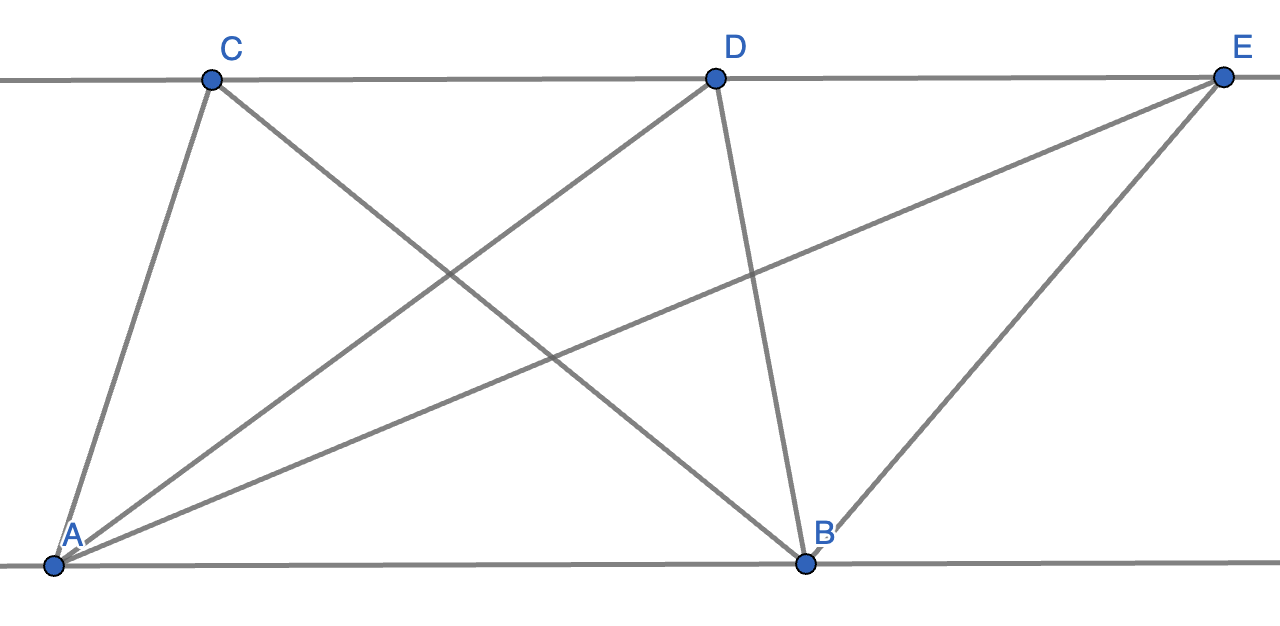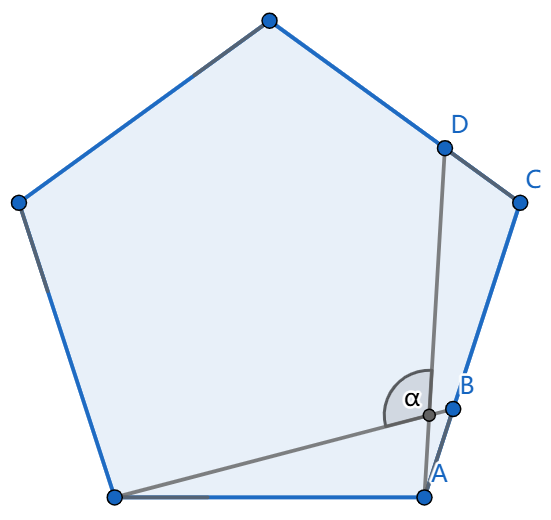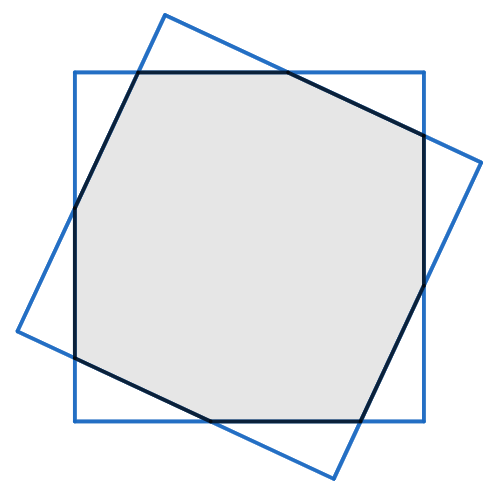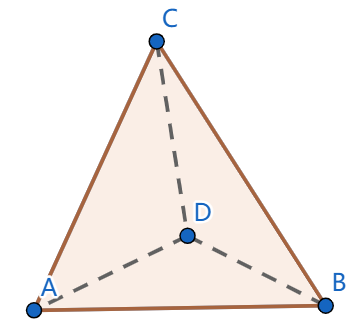Problems
We often think of symmetry as a property of shapes. Another way of thinking about it is as something you do to an object which keeps the object looking the same. The example you’ve likely met is reflection. The other one that we’ll consider today is rotation. An important feature is that we consider ‘doing nothing’ as a symmetry - we call this the identity.
Let \(n\ge3\) be a positive integer. A regular \(n\)-gon is a polygon with \(n\) sides where every side has the same length, and every angle is the same. For example, a regular \(3\)-gon is an equilateral triangle, and a regular \(4\)-gon is a square.
What symmetries does a regular \(n\)-gon have, and how many?
The set of symmetries of an object (e.g. a square) form an object called a group. We can formally define a group \(G\) as follows.
A is a non-empty set \(G\) with a binary operation \(*\) satisfying the following axioms (you can think of them as rules). A binary operation takes two elements of \(G\) and gives another element of \(G\).
Closure: For all \(g\) and \(h\) in \(G\), \(g*h\) is also in \(G\).
Identity: There is an element \(e\) of \(G\) such that \(e*g=g=g*e\) for all \(g\) in \(G\).
Associativity: For all \(g\), \(h\) and \(k\) in \(G\), \((g*h)*k=g*(h*k)\).
Inverses: For every \(g\) in \(G\), there exists a \(g^{-1}\) in \(G\) such that \(g*g^{-1}=e\).
Prove that the symmetries of the ‘reduce-reuse-recycle’ symbol form a group.

Take a pile of cards, Ace to 7 of Diamonds. Consider the following shuffle: simultaneously move the first card to the third position, the third card to the fifth position, the fifth card to the seventh position, and the seventh card to the first position. Also move the second card to the fourth position, the fourth card to the sixth position and the sixth card to the second position.
How many times do you have to do this one specific shuffle in a row to get back to where you started?
How many permutations are there of 4 cards leaving no card in the same position as before?
Lines \(AB\) and \(CDE\) are parallel. Which triangle out of \(\triangle ABC\), \(\triangle ABD\) and \(\triangle ABE\) has the greatest area?

In the picture below, we have a regular pentagon. The segments \(AB\) and \(CD\) have equal lengths. What is the angle \(\alpha\)?

We have two squares sharing the same centre, each with side length \(2\). Show that the area of overlap is at least \(3\).

A regular tetrahedron is a three dimensional shape with four faces. Each face of a regular tetrahedron is an equilateral triangle. Describe all rotational symmetries of a regular tetrahedron.

Two lines intersect at a point \(P\) at an angle of \(\alpha\). Show that a rotation in the plane around the point \(P\) through an angle \(2\alpha\) can be achieved by a reflection in one of the two lines followed by a reflection in the other line.
